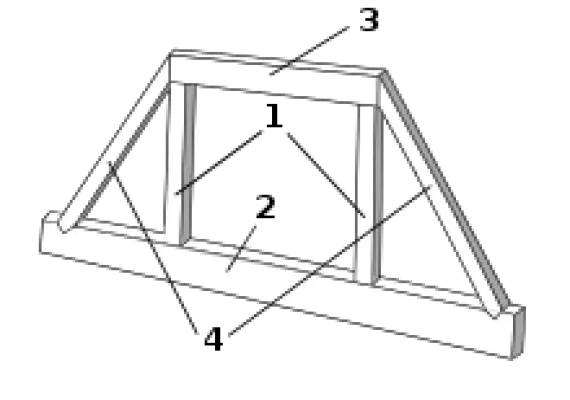Structural System | Superstructure and Substructure | Tension & Deflection Forces
Structural System | Superstructure and Substructure | Tension & Deflection Forces
What is Structural System
The structural system of a building is designed and constructed to support the loads applied to the building and transmit them safely to the ground without damaging the building.
Some structural systems are based on a single material, such as heavy timber structures. Others are combined materials, for example, structural steel framed buildings often have horizontal steel beams and vertical steel columns, along with horizontal floor planes of steel and concrete.
A building may have more than one structural system, such as when a concrete foundation supports a light wood-framed superstructure
in other buildings what appears to be the structural material such as brick, is only an exterior facing material with the real structural load carried by a concrete structural system.
Superstructure and Substructure
A building’s vertical extension above ground is called its superstructure, which includes the columns, beams, and load-bearing walls that support the floors and roof structures.
A building’s superstructure rests on its foundation, also called Substructure. The foundation, in turn, is supported by the earth below and surrounding it.
Soil conditions, the presence of water below the surface, and the bedrock characteristics below are all taken into account in the foundation’s design.
Building Load
The term building load refers to any of the forces to which a structure is subjected. The building materials’ weight is part of the building load, as are any furnishings or equipment inside the building.
Building loads also take into account people and objects that move into and out of the building.
Besides, building structures are designed to accommodate winds, including storms, the weight of accumulated snow, and earthquakes.
Structural loads are transferred through a building’s structural system to the ground. Loads are transferred across openings by systems of beams and columns.
Static Building Load
A static building load is applied slowly and steadily to a structure until it reaches its maximum weight-bearing capacity.
A structure responds slowly to a static load and is affected the most when the static forces are greatest.
Static loads include the weight of the structure itself, the weight of building elements, fixtures, and equipment permanently attached to it, and movable or moving live loads.
Live Load
Live loads change over time, but they generally do so gradually. They include the building’s occupants’ weight, mobile equipment and furnishings, and any collected snow and water.
Dynamic Load
Dynamic loads are applied suddenly to a structure, often with rapid changes in the force’s size and the point to which it is applied. Earthquakes and the loads caused by winds are examples of dynamic loads.
Compression is the shortening or pushing together of a material that reduces its size or volume.
For example, if you press down on a firm cushion, the material inside is squeezed together. This squeezing may cause the cushion’s shape to deform and stretch the covering fabric in some places while pushing it together in others.
In a beam, which is a horizontal structural member that is longer than it is wide or deep compression may cause the beam to bend downward.
Span, Deflection, and Tension Forces
If the pressure or load is applied at the center of a beam that is supported at both ends, the center will bend down from the horizontal.
The distance between the beams supports called its span, the perpendicular distance that a beam is bent down when a load is placed on it is called deflection.
Deflection increases as the load become heavier, and the span becomes longer.
When a beam deflects under a load, the beam material under the load at the top of the beam is pushed together or compressed. At the same time, the material at the bottom of the load is pulled apart.
Tension is the reaction of a material to stresses stretching or pulling on a material along the direction of its length.
A beam that bends and deflects is subject to an internal combination of compression and tensile stresses.
Interestingly, the material that lies between the compressed and stretched areas is subject to relatively little stress.
This is why steel beams, for example, can be designed with a wide top and bottom and a narrow middle. The stress is from the loads, are proportionally greater along with the upper and lower parts of the cross-section of a beam, increasing the depth of the beam and placing more material where stresses are greatest helps the beam carry loads more efficiently.

